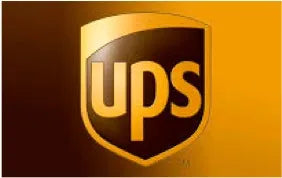In the competitive landscape of business, finding strategies to boost profit margins is crucial for success. B2B wholesale buying offers a promising avenue to achieve this goal. By purchasing products in bulk directly from wholesale factories, businesses can take advantage of significant cost savings and maximize their profitability. This comprehensive guide will walk you through the key steps and strategies to effectively leverage B2B wholesale buying and enhance your profit margins. Let's dive into how you can boost your profit margins with B2B wholesale buying.
Table of Contents:
I. Understanding B2B Wholesale Buying
II. Identifying Profitable Product Categories
III. Sourcing Reliable Wholesale factories
IV. Negotiation Techniques for Better Pricing
V. Streamlining Logistics and Operations
I. Understanding B2B Wholesale Buying
The Basics of B2B Wholesale Buying: Explained
a. Definition of B2B wholesale buying: B2B (Business-to-Business) wholesale buying refers to the process of purchasing goods in bulk directly from manufacturers or wholesale factories at a discounted price, with the intention of reselling them to other businesses or end consumers.
b. Key characteristics of B2B wholesale buying: Large order quantities, lower unit costs, and the absence of retail packaging or branding.
c. Distinction between B2B and B2C (Business-to-Consumer) buying: B2B buying focuses on meeting the needs of other businesses, while B2C buying caters directly to individual consumers.
Benefits of B2B Wholesale Buying for Your Business
a. Significant cost savings: Buying products in bulk allows businesses to benefit from lower per-unit costs, increasing profit margins.
b. Competitive pricing advantage: By securing better pricing from wholesale factories, businesses can offer competitive prices to their customers.
c. Greater control over inventory: Purchasing in bulk enables businesses to maintain a consistent supply of products, reducing the risk of stockouts.
d. Opportunity for customization and private labeling: Wholesale buying provides the option to customize products or add private labels, enhancing brand identity and customer loyalty.
e. Flexibility in distribution channels: B2B wholesale buying allows businesses to sell products through various channels, such as retail stores, e-commerce platforms, or distribution networks.
Key Factors to Consider Before Embarking on B2B Wholesale Buying
a. Market demand and trends: Conduct thorough market research to identify product categories with high demand and growth potential.
b. Financial feasibility: Evaluate your business's financial capacity to purchase and store bulk quantities of products.
c. Supply chain and logistics: Assess the capabilities of your existing supply chain and logistics infrastructure to handle large-scale purchasing and storage.
d. Regulatory compliance: Familiarize yourself with any legal requirements, permits, or certifications necessary for handling and distributing specific product categories.
By understanding the basics of B2B wholesale buying, recognizing its benefits, and considering the relevant factors, businesses can lay a solid foundation for implementing successful wholesale purchasing strategies. This knowledge sets the stage for exploring the subsequent steps in boosting profit margins through B2B wholesale buying.
II. Identifying Profitable Product Categories
Market Research: Identifying Lucrative Product Categories
Before diving into B2B wholesale buying, conducting thorough market research is crucial. Start by analyzing industry trends, consumer demand, and market saturation. Look for emerging or underserved product categories that have the potential for high profitability. Utilize market research tools, industry reports, and competitor analysis to gain insights into the market dynamics.
Analyzing Demand and Competition
Once you've identified potential product categories, assess the demand and competition within each category. Look for products with a consistent and growing demand, as well as limited competition. Explore niche markets or specialized product segments that may offer higher profit margins due to lower competition. Consider factors such as consumer preferences, demographic trends, and market gaps.
Assessing Profit Margins: Calculating Cost and Potential Revenue
Evaluate the profit potential of each product category by calculating the cost of goods sold (COGS) and estimating potential revenue. Consider the wholesale prices offered by factories and factor in additional costs such as shipping, packaging, and marketing expenses. Compare the estimated revenue with the total cost to determine the profit margin. Focus on product categories that offer a favorable balance between cost and potential revenue.
By conducting comprehensive market research, analyzing demand and competition, and assessing profit margins, you can identify lucrative product categories for your B2B wholesale buying endeavors. This step is crucial in ensuring that you invest your resources in products that have the potential to generate significant profits and drive business growth.
III. Sourcing Reliable Wholesale factories
Finding reliable wholesale factories is a critical step in boosting your profit margins through B2B wholesale buying. Here are the key aspects to consider when sourcing factories:
Researching Wholesale factories: Where to Start
a. Online Directories and Marketplaces: Utilize reputable online directories and marketplaces that provide a wide range of wholesale factories. Some popular platforms include Marcothepolo, GlobalSource, and Alibaba.
b. Industry Associations and Trade Shows: Attend industry-specific trade shows and events to network with potential factories and gain valuable insights into the market.
Evaluating factory Reliability and Trustworthiness
a. factory Reputation and Reviews: Conduct thorough research on each potential factory. Check their reputation, customer reviews, and ratings on trusted platforms or forums to gauge their reliability.
b. Verification and Certifications: Look for factories that have relevant certifications and quality control processes in place, such as ISO certifications or compliance with industry standards.
c. Communication and Responsiveness: Evaluate the factory's communication skills and responsiveness. Prompt and transparent communication is crucial for a smooth business relationship.
Building Relationships with Wholesale factories: Importance and Strategies
a. Initial Contact and Introduction: Reach out to potential factories with a clear introduction of your business and its needs. Demonstrate your professionalism and commitment to building a long-term partnership.
b. Requesting Samples and Test Orders: Before committing to large orders, request samples or place smaller test orders to assess the quality of products, delivery times, and overall satisfaction.
c. Personal Meetings and Site Visits: Whenever possible, arrange face-to-face meetings or site visits to establish a personal connection and better understand the factory's operations and capabilities.
d. Regular Communication and Feedback: Maintain open lines of communication with your factories. Provide feedback on their products and services, and collaborate to address any issues or improvements needed.
By following these steps, you can ensure that you source reliable wholesale factories who align with your business requirements and contribute to boosting your profit margins. Remember, factory reliability is crucial for consistent product quality, timely deliveries, and favorable pricing, all of which directly impact your bottom line.
IV. Negotiation Techniques for Better Pricing
Effective Negotiation Strategies with Wholesale factories:
Negotiating with wholesale factories is a crucial step in maximizing your profit margins. Here are some effective negotiation techniques to secure better pricing:
a. Research and Preparation: Before entering into negotiations, gather information about the market, competitors, and the factory's pricing history. This will give you leverage and a solid understanding of what is reasonable to expect.
b. Build Rapport: Establishing a positive and professional relationship with your wholesale factory can go a long way in negotiations. Take the time to understand their business and communicate openly to foster trust.
c. Volume Discounts: Bulk purchasing is a key advantage of B2B wholesale buying. Leverage your buying power by negotiating volume discounts. factories are often willing to offer lower prices for larger orders.
Leveraging Buying Power: Bulk Purchasing Benefits:
Buying in bulk can provide significant cost advantages for your business. Here's how you can leverage your buying power to negotiate better pricing:
a. Consolidate Orders: Whenever possible, consolidate your orders to increase the quantity. This allows you to negotiate better pricing and shipping terms.
b. Long-Term Contracts: Consider entering into long-term contracts with your wholesale factories. This commitment can provide stability for both parties and may result in discounted prices.
c. Price Matching: Research and compare prices from different factories. If you find a better offer elsewhere, use it as leverage to negotiate with your current factory for a price match or even a better deal.
Long-Term Contracts and Volume Discounts: Maximizing Cost Savings:
Long-term contracts and volume discounts can significantly impact your profit margins. Here's how to make the most of these opportunities:
a. Negotiate Favorable Terms: In addition to negotiating lower prices, discuss favorable payment terms, such as extended payment terms or early payment discounts.
b. Commitment and Loyalty: Demonstrating your commitment and loyalty to a factory can result in more favorable pricing. Communicate your intentions to establish a long-term partnership and show your willingness to support their business.
c. Monitor Market Conditions: Stay informed about market trends, pricing fluctuations, and competitor strategies. This knowledge will help you negotiate better deals and adapt your purchasing strategy accordingly.
Remember, successful negotiation is a collaborative process. Aim for a win-win outcome where both you and the factory benefit. Building strong relationships and effectively leveraging your buying power will help you secure better pricing, ultimately boosting your profit margins through B2B wholesale buying.
V. Streamlining Logistics and Operations
Efficient Inventory Management: Reducing Costs and Waste
a. Implementing Inventory Tracking Systems: Utilize technology such as barcode scanners or RFID tags to accurately track inventory levels and streamline the ordering process.
b. Demand Forecasting and Data Analysis: Analyze historical data and market trends to forecast demand accurately, preventing overstocking or stockouts.
c. Just-in-Time (JIT) Inventory System: Adopt a JIT approach to inventory management, minimizing storage costs and reducing the risk of obsolete inventory.
Optimizing Supply Chain and Delivery Processes
a. Collaborating with factories: Establish strong relationships with factories to streamline the supply chain, reduce lead times, and negotiate favorable delivery terms.
b. Consolidating Shipments: Coordinate with factories to consolidate multiple orders into a single shipment, reducing transportation costs and improving efficiency.
c. Implementing Automation: Embrace automation technologies, such as warehouse management systems or order processing software, to optimize order fulfillment and reduce manual errors.
Collaboration with factories: Streamlining Operations for Mutual Benefit
a. factory Performance Evaluation: Regularly assess factory performance to ensure they meet quality, delivery, and service standards.
b. Communication and Information Sharing: Maintain open lines of communication with factories, sharing forecasts, inventory levels, and any changes in demand to enhance collaboration and efficiency.
c. Vendor-Managed Inventory (VMI): Explore VMI partnerships where factories take responsibility for managing and replenishing inventory based on agreed-upon levels, reducing the burden on your business.
By streamlining logistics and operations, businesses can reduce costs, improve efficiency, and ultimately boost profit margins. Efficient inventory management minimizes carrying costs and waste, while optimizing the supply chain and delivery processes helps reduce transportation expenses. Collaboration with factories fosters better communication, improved performance, and mutually beneficial partnerships. Embracing technology and automation further enhances operational efficiency. By implementing these strategies, businesses can create a streamlined and agile operation that drives profitability and ensures customer satisfaction.
Conclusion:
B2B wholesale buying provides businesses with a powerful tool to boost their profit margins and gain a competitive edge. By understanding the fundamentals, identifying profitable product categories, sourcing reliable factories, mastering negotiation techniques, and streamlining logistics, you can maximize cost savings and optimize your operations. Remember, achieving sustainable profit margins requires continuous evaluation, adaptation, and nurturing relationships with wholesale factories. So, go ahead and embark on your journey to enhance profitability through B2B wholesale buying. Here's to a prosperous future for your business!
You may also like:
Tips for Building a Strong Relationship with Your Wholesale Factories
How to Negotiate with Wholesale Factories and Get the Best Deals
The Benefits and Challenges of Importing Goods for Wholesale
10 Essential Tips for Successful B2B Wholesale Purchasing












0 comments